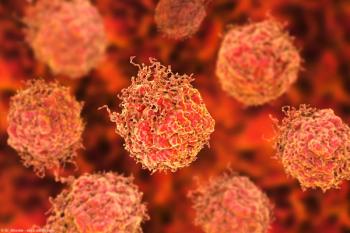
Protein biomarkers associated with cellular aging may be predictive of pelvic organ prolapse risk
"The fact that we are able to swab and look at these proteins means that we might be able to identify women at risk early on,” says Maria Florian-Rodriguez, MD.
Investigators have found that proteins associated with cellular senescence detected from vaginal secretions via a swab test may help identify women at risk for pelvic organ prolapse (POP).1,2
The data were published in Aging Medicine.
“One of the main risk factors for prolapse is vaginal childbirth, but we know that most women don’t have prolapse right away. They develop it 15 to 20 years later. It’s very hard to follow one subject for that amount of time. The fact that we are able to swab and look at these proteins means that we might be able to identify women at risk early on,” said lead author Maria Florian-Rodriguez, MD, in a news release on the findings.2 Florian-Rodriguez is an assistant professor of obstetrics and gynecology at UT Southwestern Medical Center in Dallas, Texas.
For the study, vaginal swabs were obtained from 81 women. Patients were divided into 4 groups: premenopausal women with (pre-P, n = 17) and without prolapse (pre-NP, n = 22) and postmenopausal women with (post-P, n = 24) and without prolapse (post-NP, n = 18). The presence and quantity of 10 senescence-associated secretory phenotype (SASP) proteins were determined using multiplex immunoassays (MagPix).
The relative sensitivity and specificity of SASP biomarkers in predicting risk of POP was determined using unilateral logistic regression. From modeled receiver operating characteristic curves, GROaCXCL1 had the highest area under the curve (AUC) at 62.7%, compared with MIF (AUC = 61.7%), IFNG (AUC = 59.7%), and GM CSF (AUC = 57.7%).
Further, data showed that the 4 groups included in the study had significantly different total protein concentrations of vaginal secretions (P = .003). Postmenopausal women with prolapse were found to have significantly higher concentrations of GROaCXCL1, MIF, IDNG, and GM CSF proteins.
The highest mean concentrations of the SASP proteins analyzed were found in the pre-P group (16, IQR = 4.6, 38.3 μg/μL). Conversely, the lowest mean concentrations were found among those in the post-P cohort (4.4, IQR = 2.6, 7 μg/μL). Median differences were also found to be significantly different among the 4 cohorts, with the largest difference observed between the pre-P and the post-P cohorts (P = .0072).
To account for these differences, the investigators normalized all SASP proteins to the purified protein concentration for each sample. The highest normalized concentrations of SASP markers were seen in the post-P group, and the lowest were seen among those in the pre-NP group.
The authors cautioned, “Our finding that SASP-associated proteins are present in different normalized concentrations among the four groups and present in the highest number among postmenopausal women with prolapse, bolsters the possibility that these markers may be involved in the pathophysiology of prolapse. Although possible, these increases are not likely to be a consequence of prolapse alone, since premenopausal women with prolapse did not show similar increases in SASP protein concentrations.”
Rather, they suggest that other factors may also be influential in younger women who develop POP before experiencing menopause, and further research is needed to validate their findings.
References
1. Sawyer P, Shi H, Keller P, Brown S, Florian-Rodriguez M. Quantification of senescence-associated secretory phenotype proteins in the vaginal secretions of pre- and postmenopausal women with and without prolapse. Aging Med (Milton). Published online May 14, 2023. Accessed July 6, 2023. doi:10.1002/agm2.12255
2. Early diagnosis of pelvic floor disorders key for health. News release. UT Southwestern Medical Center. July 5, 2023. Accessed July 7, 2023. https://www.newswise.com/articles/early-diagnosis-of-pelvic-floor-disorders-key-for-health?ta=home
Newsletter
Stay current with the latest urology news and practice-changing insights — sign up now for the essential updates every urologist needs.


















